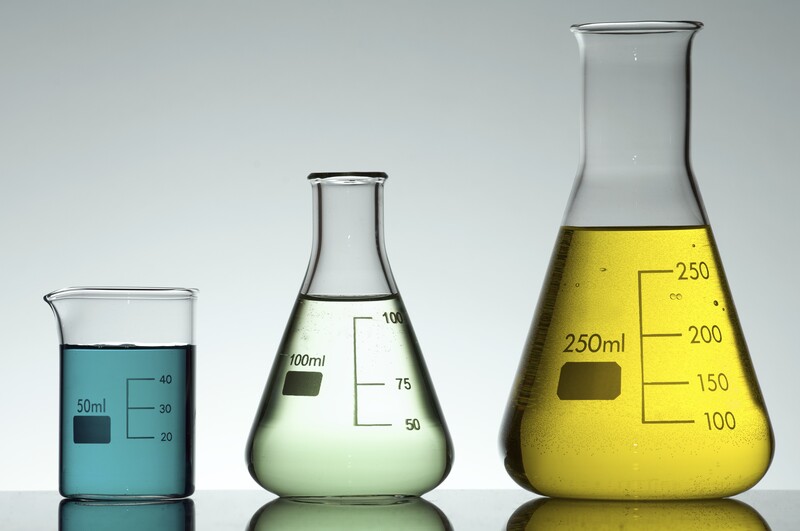Ferric Chloride (FeCl3) is a chemical compound comprised of iron and chlorine, presenting in multiple variations including anhydrous (without water) and hydrated (with water) forms. The term ‘Ferric Chloride 38%‘ signifies a solution of ferric chloride in which the weight concentration of ferric chloride amounts to 38%. This indicates that out of every 100 grams of the solution, 38 grams consist of the actual ferric chloride compound, while the remaining 62 grams generally encompass water or other solvents. Such a solution finds frequent application across diverse industrial, laboratory, and water treatment contexts.
A solution of ferric chloride with a concentration of 38% is widely employed for the purpose of etching, especially in the realm of producing printed circuit boards (PCBs) and other applications involving metal etching. The etching process entails the selective removal of metal from a substrate to create intricate patterns, circuits, or designs. Ferric chloride serves as a prevalent etchant for metals like copper due to its potent oxidizing attributes. In this process, a prepared substrate is immersed in a bath containing ferric chloride solution. The ferric chloride actively attacks and dissolves the exposed copper, while the unexposed copper remains shielded by the residual photoresist. Rigorous monitoring ensures the desired progress of the etching procedure. The rate of etching can vary based on factors such as solution temperature and agitation. Ferric chloride is favored for etching due to its effectiveness and comparatively safe handling compared to other aggressive etchants. Nevertheless, it’s crucial to acknowledge that ferric chloride can leave stains on surfaces and fabrics, and its usage mandates appropriate safety measures. Furthermore, the byproducts generated during etching—comprising spent ferric chloride solution and waste materials—must be responsibly managed and disposed of in alignment with local regulations to prevent environmental impact. To achieve precise and consistent outcomes, adhering to established protocols and best practices when utilizing ferric chloride for etching purposes is highly recommended.
Ferric Chloride 38% is a widely employed agent in the realm of water treatment procedures. Its primary role involves serving as both a coagulant and a flocculant to aid in the elimination of impurities, particles, and contaminants from water. Coagulation works by destabilizing and gathering suspended particles and colloids, enabling their efficient removal. Flocculation, on the other hand, gently stirs the water to encourage the formation of larger flocs or aggregated particles. During the coagulation and flocculation stages, ferric chloride is introduced into the water. This addition introduces positively charged ions that neutralize the negative charges present on suspended particles. This neutralization allows these particles to attract and bind together, forming larger aggregates that settle or can be more readily filtered.
Beyond its coagulation and flocculation prowess, ferric chloride finds utility in phosphorus elimination from water bodies. It forms insoluble compounds with phosphate ions, a pivotal process in mitigating nutrient pollution and restraining excessive algae proliferation in water bodies. Furthermore, ferric chloride can also serve as a pH-adjusting agent in specific scenarios, particularly when the water’s pH requires reduction.
In select instances, ferric chloride assumes a role in minimizing the generation of disinfection byproducts. These byproducts can pose risks when chlorine or other disinfectants are employed in the water treatment process. Hence, ferric chloride’s multifaceted applications contribute significantly to the enhancement of water treatment efficacy.
It’s crucial to bear in mind that while ferric chloride showcases effectiveness in specific water treatment contexts, vigilant oversight is required to avert excessive treatment and guarantee compliance with regulatory benchmarks for water quality and safety. Furthermore, the management and appropriate disposal of the sludge produced during the treatment process are essential to prevent any potential environmental harm. Given the intricate nature of water treatment procedures, which can diverge based on the particular water source and treatment objectives, seeking advice from water treatment experts and adhering to local rules and recommendations is advisable when engaging chemicals such as ferric chloride for water treatment endeavors.
Ferric Chloride 38% also possesses potential applications in chemical synthesis, particularly serving as a Lewis acid catalyst. A Lewis acid is a species capable of accepting an electron pair from a Lewis base during a chemical reaction. By virtue of its electron-deficient nature, ferric chloride can function as a Lewis acid, facilitating diverse chemical reactions. These encompass Friedel-Crafts, Halogenation, Esterification, Oxidation, Polymerization, and Cyanation reactions. It’s noteworthy that while ferric chloride can serve effectively as a catalyst, its utilization mandates precise control to ensure the desired progress of reactions. Factors such as catalyst concentrations, reaction conditions (including temperature and solvent), and safety precautions should all be given careful consideration when incorporating ferric chloride into chemical synthesis processes.
Exercising caution in the handling of ferric chloride is imperative, given its corrosive nature and potential to induce skin and eye irritation. Wearing protective gloves and safety glasses is consistently advised. Furthermore, the solution’s improper management and disposal can pose environmental risks, as it could introduce detrimental ions into water systems. Adhering to stringent safety measures is paramount when dealing with substances like ferric chloride, encompassing their proper use and handling.
Level7Chemical.com emerges as the prime choice for acquiring Ferric Chloride 38%, providing a dependable outlet that guarantees both quality and convenience.
